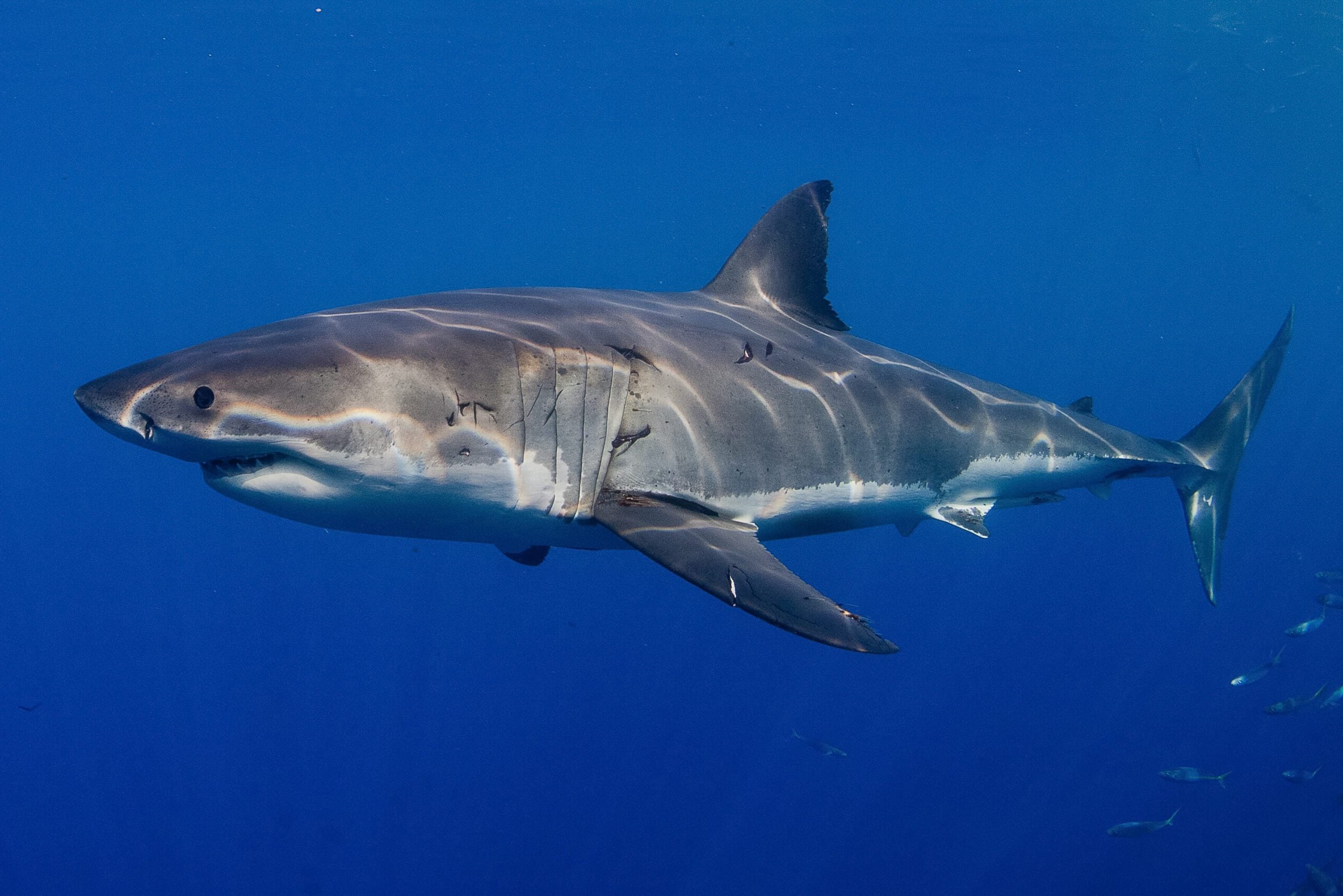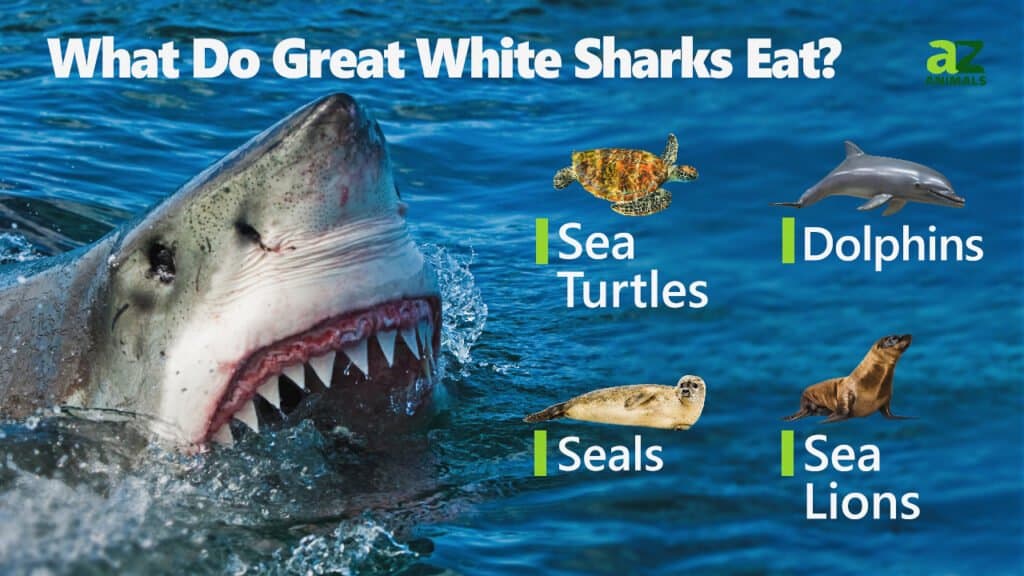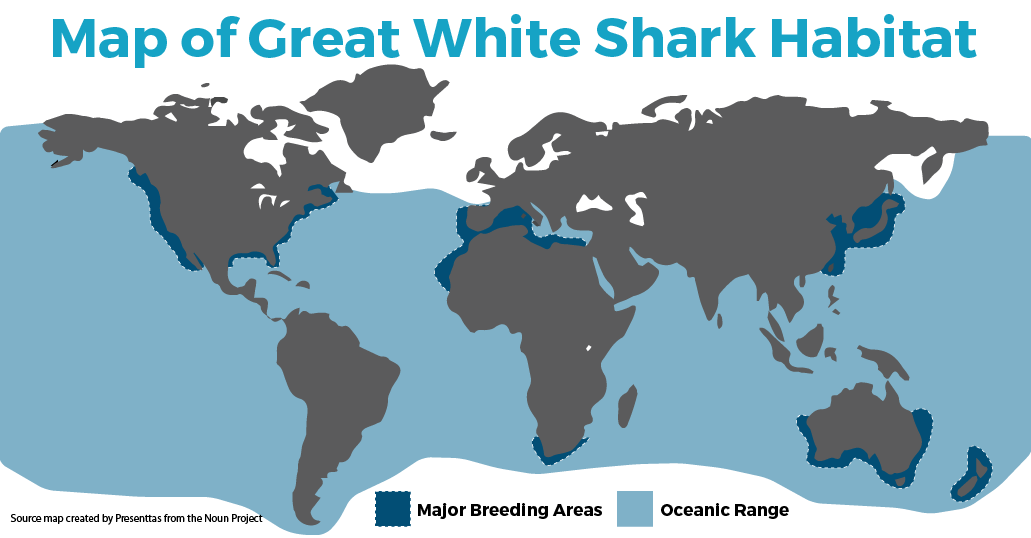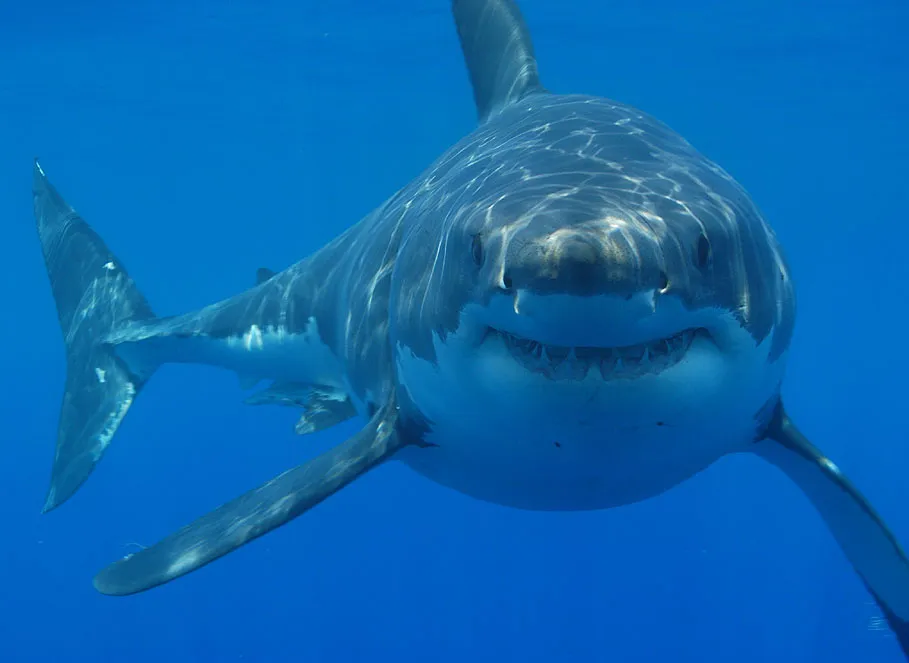Great White Sharks
The
great white shark
is the world's largest known predatory fish. Great whites are named
after their white underbellies, but their topsides can come in a
variety of browns and grays. This stark contrast between colorations
is known as countershading, and it allows many fish species to blend
in with their surroundings.


It has 300 teeth, which are constantly replaced. Sharks have
several rows of exposed teeth lining both the upper and lower jaw.
Additional rows of teeth form behind these and gradually move
forwards, replacing the front biting teeth as they wear away and fall
out. A great white will likely get through a whopping 30,000 teeth in
its lifetime.
Source

Great White Shark Diet
Great whites feed on a range of prey, from small fish to large marine
mammals. For example, halibut, sea turtles, seals, sea lions, other
(smaller) sharks, rays, dolphins and dead whales.
Source

Great White Shark Habitat
While frequently associated with Australia and South Africa, great white
sharks tend to be found in temperate and tropical coastal waters all
over the planet.
Great white habitat preferences change as they age: Pups and juveniles
are more likely to be found in coastal and estuary habitats, and adults
usually live farther out at sea in pelagic, or open ocean, ecosystems.
However, even large adults will cruise shorelines if there’s a known
food source, such as a seal or sea lion rookeries.
Source

Misunderstood Creatures
While many people are familiar with this species because of the movie
Jaws, which was inspired by a great white shark in New Jersey, the
legendary fish is far less fearsome in reality. In fact, just five
people were killed by sharks of any species in 2022—despite more people
in the water than ever before.
Great white sharks are fascinating and vital to the entire planet's
health. As a keystone species, great white sharks impact their habitat
immensely, maintaining marine life populations, which keep the oceans
balanced.
Source 1
Source 2


Other Names for Great White Sharks
- Carcharodon carcharias
- White Shark
- White Pointer
- Great White
Coded by Rhiannon